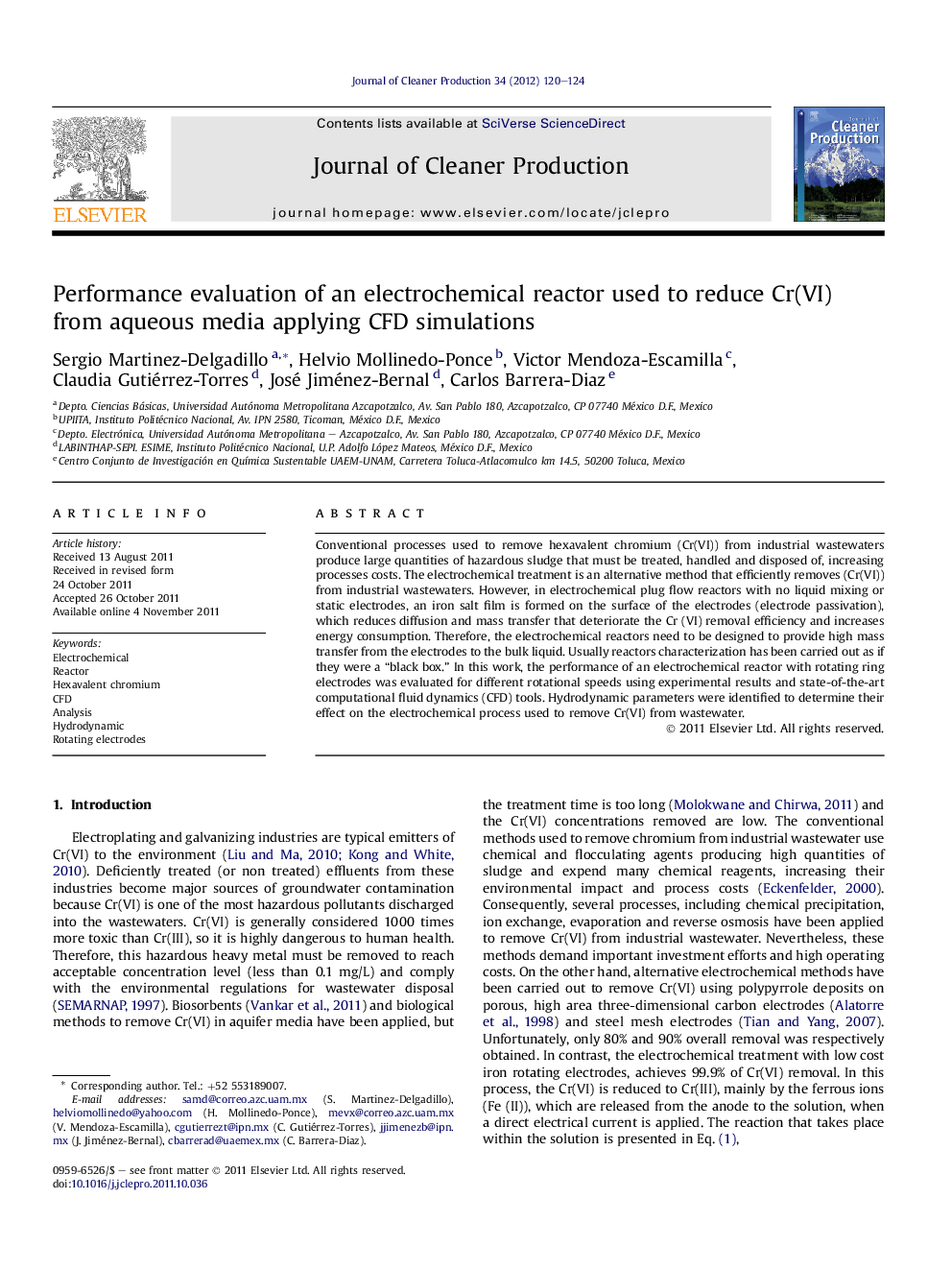| Article ID | Journal | Published Year | Pages | File Type |
|---|---|---|---|---|
| 1745620 | Journal of Cleaner Production | 2012 | 5 Pages |
Conventional processes used to remove hexavalent chromium (Cr(VI)) from industrial wastewaters produce large quantities of hazardous sludge that must be treated, handled and disposed of, increasing processes costs. The electrochemical treatment is an alternative method that efficiently removes (Cr(VI)) from industrial wastewaters. However, in electrochemical plug flow reactors with no liquid mixing or static electrodes, an iron salt film is formed on the surface of the electrodes (electrode passivation), which reduces diffusion and mass transfer that deteriorate the Cr (VI) removal efficiency and increases energy consumption. Therefore, the electrochemical reactors need to be designed to provide high mass transfer from the electrodes to the bulk liquid. Usually reactors characterization has been carried out as if they were a “black box.” In this work, the performance of an electrochemical reactor with rotating ring electrodes was evaluated for different rotational speeds using experimental results and state-of-the-art computational fluid dynamics (CFD) tools. Hydrodynamic parameters were identified to determine their effect on the electrochemical process used to remove Cr(VI) from wastewater.
► We use experimental Cr(VI) removal results and CFD to study the flow within an electrochemical reactor. ► Increasing the angular velocity of the rotating ring electrodes, the Cr(VI) removal rate increases. ► Increasing the angular velocity improves the mass transfer rate between the electrodes and the liquid. ► Above 150 rpm, more energy is dissipated than at lower angular velocities. ► Increasing the angular velocity will reduce the Cr(VI) removal rate increment.
